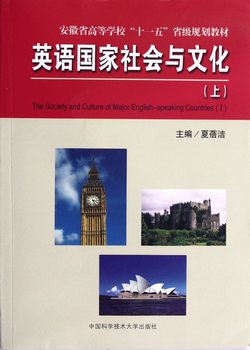对比语言学导论(英文版) / 21世纪英语专业系列教材
定价:¥39.00
作者: 柯平
出版时间:2016-02
出版社:北京大学出版社
- 北京大学出版社
- 9787301263334
- 1版
- 70621
- 40189077-7
- 平装
- 16开
- 2016-02
- 280
- 264
- H0
- 英语
作者简介
内容简介
本书主要特点与创新之处包括:(1)探讨了英汉语言结构与功能差异背后的深层原因(如造成英汉语亲属称谓繁简之别以及英汉语语篇结构差异的社会历史与文化心理因素等);(2)从理论与实践两方面阐明了英汉语言研究中的许多重要问题(如英语主语突出与汉语话题突出这两种迥然不同的信息结构、诗歌翻译归化与外化的语言学依据等);(3)国内已有的相关研究集中于语音、音位、词汇和语法层次上的对比分析,对翻译、外语写作和外语交际特别重要的篇章和语用对比方面的研究相当缺少,本书针对此情况做了比较多的填空补缺工作(如对英汉语篇章结构上的差异与中国学生英语写作与英汉互译问题之间的关系的研究、对不同语言会话结构方面的语用特点与跨文化交往中沟通与对谈的技巧之间的关系的讨论等);(4)强调结构与生成的概念,自始至终贯穿着现代科学的分析精神与方法;(5)在句法和语义对比基础的讨论中,作者引入了符号学概念,在国内同类型著作中属于首创.
目录
LIST OF FIGURES AND TABLES 9PREFACE 11CHAPTER 1 INTRODUCTION 11.1 What is Contrastive Linguistics? 11.1.1 The Name and Nature of Contrastive Linguistics 21.1.1.1 Linguistics 21.1.1.2 Contrastive Linguistics (Contrastive Analysis) 41.1.2 Micro-Contrastive Linguistics and Macro-Contrastive Linguistics 101.2 Why Contrastive Linguistics? 111.2.1 The Theoretical Need for Contrastive Linguistics 121.2.2 The Practical Need for Contrastive Linguistics 131.3 The History and Development of Contrastive Linguistics 18Questions for Discussion and Research 26CHAPTER 2 THE PRINCIPLES AND METHODS OF CONTRASTIVE ANALYSIS 282.1 Basic Assumptions and Hypotheses Underlying Contrastive Analysis (CA) 282.1.1 The Psychological Basis of Contrastive Analysis: Transfer 292.1.2 The Strong and Weak Versions of Contrastive Analysis Hypothesis 302.1.3 The Predictive Power of Contrastive Analysis 312.2 Theoretical Contrastive Analysis and Applied Contrastive Analysis 322.3 Criteria for Comparison 372.3.1 The Surface Structure (SS) 382.3.2 The Deep Structure (DS) 402.3.3 Translation Equivalence 442.4 Procedures of Contrastive Analysis 49Questions for Discussion and Research 50CHAPTER 3 PHONETIC AND PHONOLOGICAL CONTRASTIVE ANALYSIS 523.1 Phonetics and Phonology 523.2 Contrastive Phonetics 543.2.1 Articulatory Phonetics 543.2.1.1 Vocal organs (articulators) and the dynamics of voice production 543.2.1.2 The modulation of speech sounds 583.2.2 Acoustic Phonetics 603.2.2.1 Frequency 603.2.2.2 Amplitude of vibration 613.2.2.3 Timbre 613.2.3 Auditory Phonetics 623.3 Contrastive Phonology 653.3.1 Phonological Contrastive Analysis 653.3.1.1 The functional statuses of comparable speech sounds in different languages 653.3.1.2 Pronunciation problems caused by phonemic asymmetries and by allophonic differences 663.3.1.3 The functional loads of comparable phonological contrasts in different languages 673.3.2 Two Phonological Models 683.3.2.1 The taxonomic or structural phonology 683.3.2.2 Generative phonology 693.4 Suprasegmental Contrastive Analysis 713.4.1 The Contrastive Analysis of Pitch 723.4.1.1 Tone 723.4.1.2 Intonation 733.4.2 The Contrastive Analysis of Juncture 75Questions for Discussion and Research 76CHAPTER 4 LEXICAL CONTRASTIVE ANALYSIS 784.1 Contrastive Lexical Morphology 794.1.1 Lexical/Derivational Morphology and Inflectional Morphology 794.1.2 Morpheme 804.1.2.1 Free morpheme 804.1.2.2 Bound morpheme 804.1.2.2.1 Affix 804.1.2.2.2 Combining form 814.1.2.3 Stem (base morpheme) and root 814.1.3 A Comparison of the Makeup of English and Chinese Word Stock 824.2 Contrastive Lexical Semantics 844.2.1 The Motivation (Internal Form) of Words 854.2.1.1 Phonetic motivation 864.2.1.2 Graphemic motivation 864.2.1.3 Morphological motivation 874.2.1.4 Semantic motivation 874.2.1.5 A contrastive analysis of the morphological motivation of English, German, and Chinese words 874.2.2 Sense Relationships 914.2.2.1 Syntagmatic semantic relationship: Collocation 924.2.2.2 Paradigmatic semantic relationships 944.2.2.2.1 Synonymy 944.2.2.2.2 Antonymy 954.2.2.2.3 Hyponymy 964.2.2.2.4 Incompatibility 984.2.2.3 Lexical fields and lexical gaps 984.2.3 Semantic Features 1034.3 Three Active Areas 1074.3.1 Anthropology 1084.3.2 Translation 1144.3.3 Bilingual Lexicography 118Questions for Discussion and Research 119CHAPTER 5 GRAMMATICAL CONTRASTIVE ANALYSIS 1225.1 The Concept of Grammar 1225.2 The Contrastive Analysis of Inflectional Morphology 1245.2.1 Grammatical Categories 1265.2.1.1 Aspect 1265.2.1.2 Case 1285.2.1.3 Gender 1295.2.1.4 Mood 1295.2.1.5 Number 1295.2.1.6 Person 1305.2.1.7 Tense 1305.2.1.8 Voice 1305.2.2 A Contrastive Study of the Chinese and English Case Systems 1315.3 Syntactic Contrastive Analysis 1355.3.1 The Structural Approach (Surface-structure Contrasts) 1355.3.2 The Weaknesses of the Structural Approach 1395.3.3 The Generative Approaches 1405.3.3.1 The Transformational Grammarian approach (For deep-structure contrasts) 1415.3.3.2 The Case Grammarian approach (For deeper-structure contrasts) 147Questions for Discussion and Research 154CHAPTER 6 TEXTUAL CONTRASTIVE ANALYSIS 1566.1 Text and Discourse 1586.2 The Defining Characteristics of the Text 1596.3 The Contrastive Analysis of Textual Cohesion 1626.3.1 Semantic Cohesion 1646.3.1.1 Reference 1646.3.1.2 Substitution 1676.3.1.3 Ellipsis 1686.3.1.4 Conjunction 1706.3.1.5 Lexical relationships ("lexical cohesion") 1746.3.2 Structural Cohesion 1756.3.2.1 Parallelism 1756.3.2.2 Comparison 1806.3.2.3 Information structure 1806.3.2.3.1 Theme and Rheme 1816.3.2.3.2 Functional Sentence Perspective (FSP) 1826.3.2.3.3 Topic and Comment 1836.3.3 Different Languages Preferring Different Cohesive Devices 1926.4 The Contrastive Analysis of Textual Coherence 192Questions for Discussion and Research 200CHAPTER 7 PRAGMATIC CONTRASTIVE ANALYSIS 2037.1 Speech Act Theory 2037.1.1 Speech Acts 2047.1.1.1 Performatives and constatives 2047.1.1.2 Three kinds of speech acts 2047.1.1.3 Five basic types of illocutionary acts 2057.1.2 Felicity Conditions 2067.2 Conversational Interaction 2077.2.1 The Structural Components of Conversation 2087.2.1.1 Openings 2087.2.1.2 The maintaining of a conversation 2107.2.1.3 Closings 2157.2.2 Principles of Conversational Organization 2177.2.2.1 The Cooperative Principle (Be Clear) 2177.2.2.1.1 Conversational maxims 2177.2.2.1.2 Conversational implicature 2187.2.2.2 The Rules of Politeness (Be Polite) 2217.2.2.2.1 Rule 1: Don't impose on your hearer 2217.2.2.2.2 Rule 2: Give the hearer options 2237.2.2.2.3 Rule 3: Make the hearer feel good: Be friendly 223Questions for Discussion and Research 225REFERENCES 227INDEX 235
















